How Not to Hit Tailgate When Backing Up Trailer to Tigth Turn
We may get commissions for purchases made through links in this post.
If you're intimidated by the prospect of backing a trailer into a tight space, you're certainly not alone. Backing up a trailer in general can be daunting, but getting it into a small space is an even taller order. But with the right approach, anyone can tackle this difficult task with confidence. For your convenience, we created a guide that will help you with the difficult task of backing a trailer into tight spaces.
To make backing a trailer into a tight space easier, implement the following tips:
- Use extended side mirrors
- Use a spotter
- Use a backup camera
- Make adjustments and corrections early
- Take it slow
- Practice
If you still have some questions about backing a trailer into a tight space, don't worry. In this guide, we'll discuss the topic at length so that you'll be able to back up a trailer like a pro. We'll also show you a video guide to the process. Just keep reading!
![A small trailer parked on a street showing its towing bar, How To Back A Trailer Into A Tight Space [Inc. video]](https://vehq.com/wp-content/uploads/2021/01/How-To-Back-A-Trailer-Into-A-Tight-Space-Inc-682x1024.png)
Contents
- Tips For Backing A Trailer Into A Tight Space
- Use Extended Side Mirrors
- Universal Clip-On Mirror Extension
- Use A Spotter
- Use A Backup Camera
- Make Adjustments And Corrections Early
- Take It Slow
- Practice
- Is It Easier To Back Up A Longer Trailer?
- How Do You Steer A Trailer In Reverse?
- Trailer Steering Visual Guide
- Trailer Backing Video Guide
- Do Trailers Need Reverse Lights?
- In Closing
Tips For Backing A Trailer Into A Tight Space
To make backing a trailer into a tight space a breeze, just implement the following tips.
Use Extended Side Mirrors
If your vehicle is equipped with extendable side mirrors, ensure that they are fully extended prior to backing the trailer up. Wider mirrors provide greater visibility of the trailer's rear.
If your vehicle doesn't have extendable side mirrors, consider purchasing some aftermarket mirror extensions for towing and backing your trailer up.
Universal Clip-On Mirror Extension

This universal clip-on mirror extension will securely attach to any side mirror. In some cases, this extension can virtually double rearward visibility. This gadget will certainly pay dividends when it comes to safely backing a trailer into a narrow space.
Click here to see more on Amazon.
Use A Spotter
A spotter is invaluable when it comes to backing a trailer into a tight space. Have someone—a friend or family member who's traveling with you—stand outside and direct you into the spot. Communicate with the spotter using walkie-talkies or cell phones; depending on the length of the trailer and, by extension, how far away the spotter must be, it might be impossible to hear verbal directions.
A spotter can help safely guide you into the narrow space, as it can be virtually impossible to have a clear picture of the rearward environment from the driver's seat with a trailer attached. Simply put, a spotter serves as a set of eyes behind the trailer that facilitate safe backing and obstacle avoidance.
Topsung Two-Way Radios

These two-way radios come in a variety of colors, and they are very user-friendly.
Click here to see more on Amazon.
Even if you're using walkie talkies or a cell phone to communicate with the spotter, it's a good idea to roll the windows down for even greater situational awareness.
Use A Backup Camera
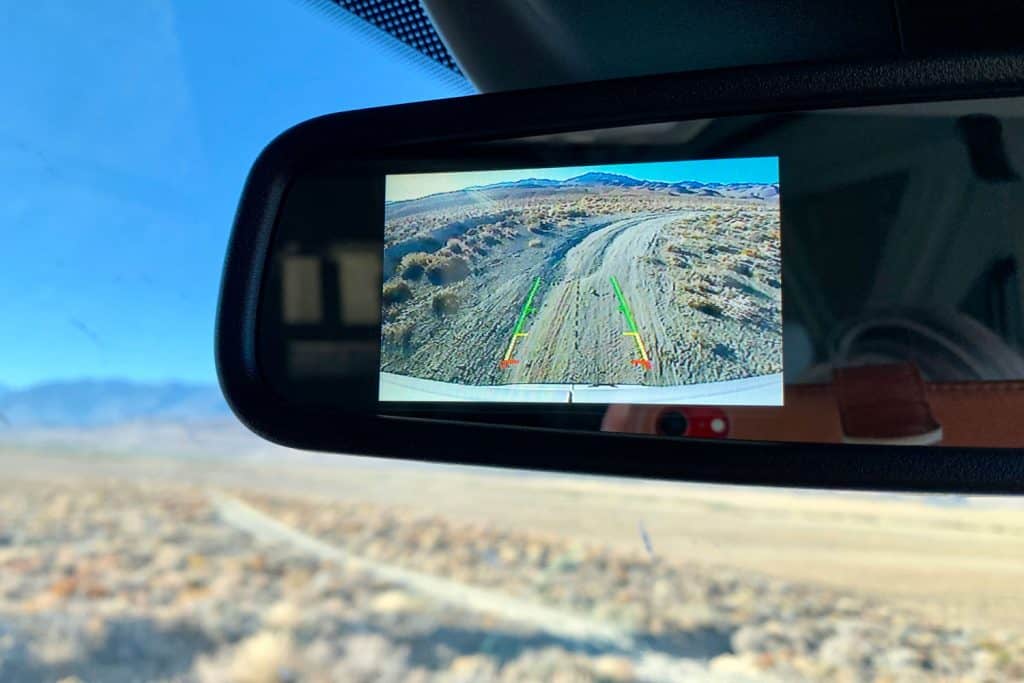
If your vehicle is equipped with a backup camera, use it when backing the trailer up. If your vehicle doesn't have a backup camera, consider having an aftermarket camera installed.
Even if the height of the trailer blocks the majority of the view, the camera will provide a peripheral view that will facilitate obstacle avoidance while backing the trailer into the space. Additionally, with a backup camera, you can easily tell if the trailer is starting to jackknife.
It's important to note, however, that you should avoid fixating exclusively on the backup camera. A backup camera is a helpful tool, but it's one that should be used in concert with the others we've discussed.
Make Adjustments And Corrections Early
When backing a trailer, it's important to make adjustments early. This is even more critical when backing a trailer into a narrow space.
When it comes to making adjustments and corrections, it's important to keep in mind that any control input (such as turning the wheel to turn the trailer in the desired direction) must be taken out as soon as the trailer starts making the desired movement.
As a general rule, adjustments made to one side must be taken out and applied in the opposite direction to stop the trailer's turn. Then, align the vehicle with the trailer, and proceed backward in a straight line.
For example, if you're backing a trailer and need to turn the trailer to the right, turn the wheel to the left while reversing and wait for the trailer to begin moving to the right (stay tuned for some trailer steering tips). As soon as the trailer starts turning right, begin turning the wheel in the opposite direction as you reverse.
Once the trailer is on the desired rearward course and you want to straighten up, you might even have to turn the wheel in the opposite direction to ensure that the trailer doesn't continue turning.
Take It Slow
Perhaps most importantly, when backing a trailer into a tight space, take it slow. Backing up a trailer is already a difficult task, but backing into a small space is a precision maneuver that requires concentration and finesse. Don't rush but rather take the maneuver slowly. If you get in a hurry to complete the maneuver, you risk over-controlling the trailer and thus making the process significantly more difficult and time-consuming.
It's all too easy to rush through this maneuver, especially if other pedestrians or vehicles are waiting on you to hurry up get out of the way (at a boat ramp, for example). Resist the temptation to rush when backing a trailer, regardless of the external factors urging you to do so. Take a deep breath, and focus exclusively on backing the trailer safely. When it comes to backing a trailer, slow and steady wins the race.
Practice
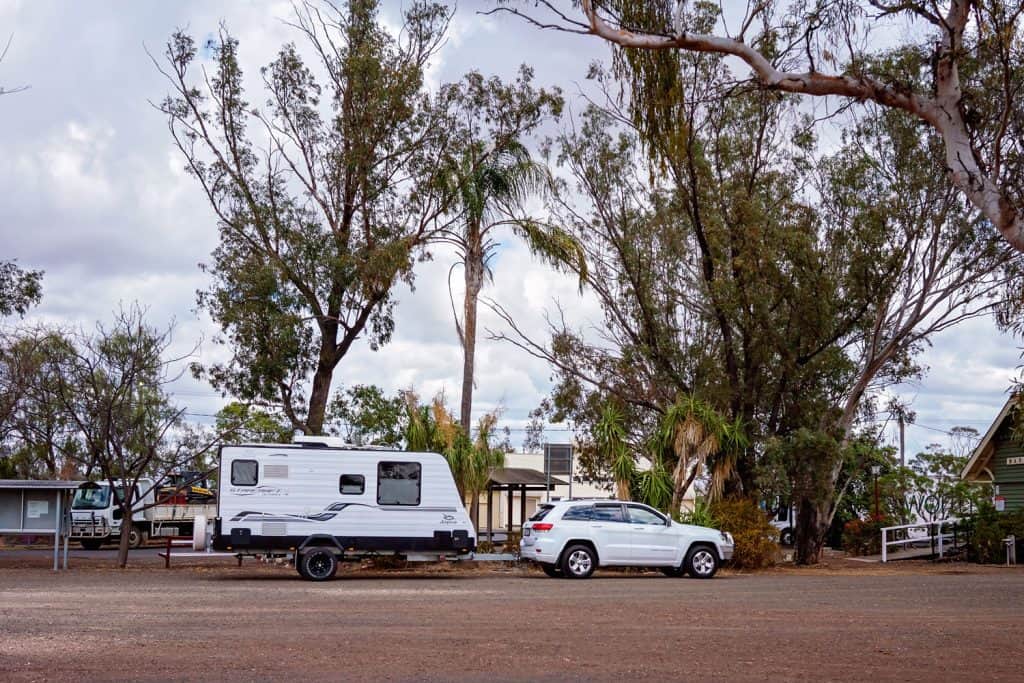
As with mastering anything, practice is key. Whenever possible, get with a friend or family member and practice backing a trailer into a tight space. Go to an empty parking lot and practice, practice, practice. This will significantly improve both your competence and confidence with backing a trailer into a space of any size.
Is It Easier To Back Up A Longer Trailer?
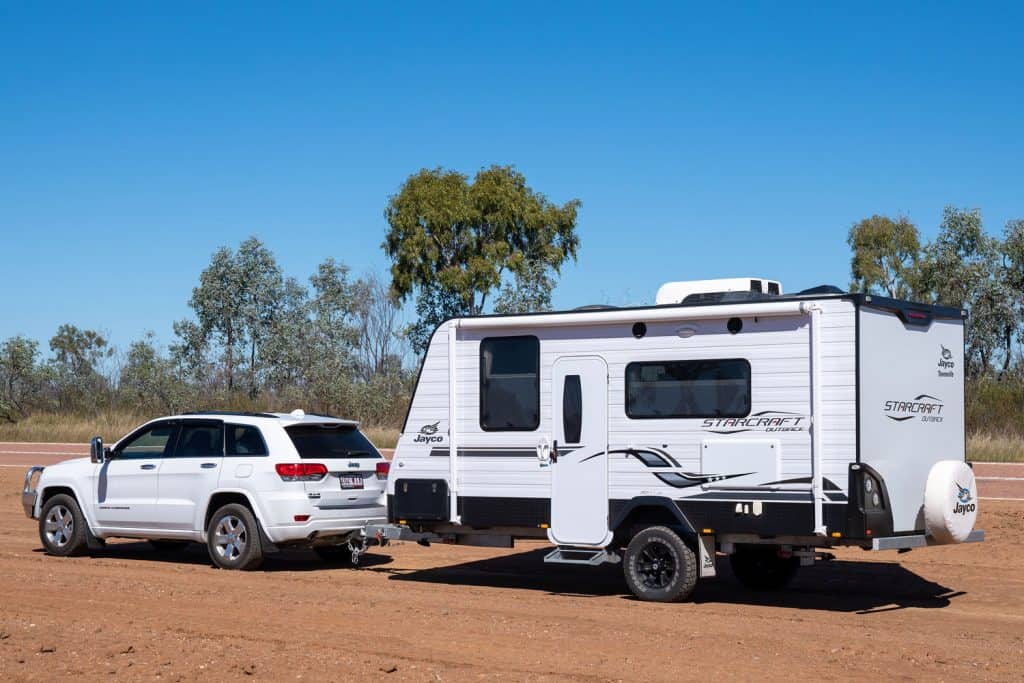
Believe it or not, backing up a longer trailer is generally easier than backing up a shorter trailer. Simply put, shorter trailers respond more quickly to the driver's inputs, making it all too easy to over-control them.
Short trailers can respond suddenly to relatively minor driver inputs, which can cause them to jack-knife in virtually no time at all. As trailer length increases, the amount of response to driver input decreases. In other words, it takes longer for large trailers to start to react. This gives the driver greater control of the trailer's movements. Thus, in general, it's less stressful to back up a longer trailer, and the driver can be more precise.
The one notable exception to this rule, however, is space. More often than not, space is the limiting factor when backing a trailer. Longer trailers will naturally require more space to maneuver, which can be problematic in certain situations.
How Do You Steer A Trailer In Reverse?
Steering the trailer is the most difficult and daunting aspect of backing one up. If you've tried steering a trailer in reverse before, you can attest to the fact that it's much easier said than done. You likely found that the trailer did the exact opposite of what you wanted it to do. But fear not, because there is a simple technique that will change the way you back up a trailer forever.
When backing a trailer, grip the steering wheel from the bottom rather than the top. When the steering wheel is gripped from the top, the trailer's movements are opposite the movement of the back of the vehicle. In other words, if you want the trailer to move left, the steering wheel must be turned to the right, and vice versa. This might sound easy enough, but in the moment, this backward concept can be difficult to process.
When the wheel is gripped from the bottom, the direction you move your hand will make the trailer move in the same direction. In other words, when your hand is at the bottom of the steering wheel, moving it to the left will turn the wheel to the right, making the trailer go to the left. There's no trickery here; this method simply removes the mental work of thinking about making the opposite control input.
Trailer Steering Visual Guide
If you're still confused, don't worry. Here's an illustrated guide that will help you better understand this trick:
To turn the trailer to the right, start by holding the steering wheel from the bottom, like so:
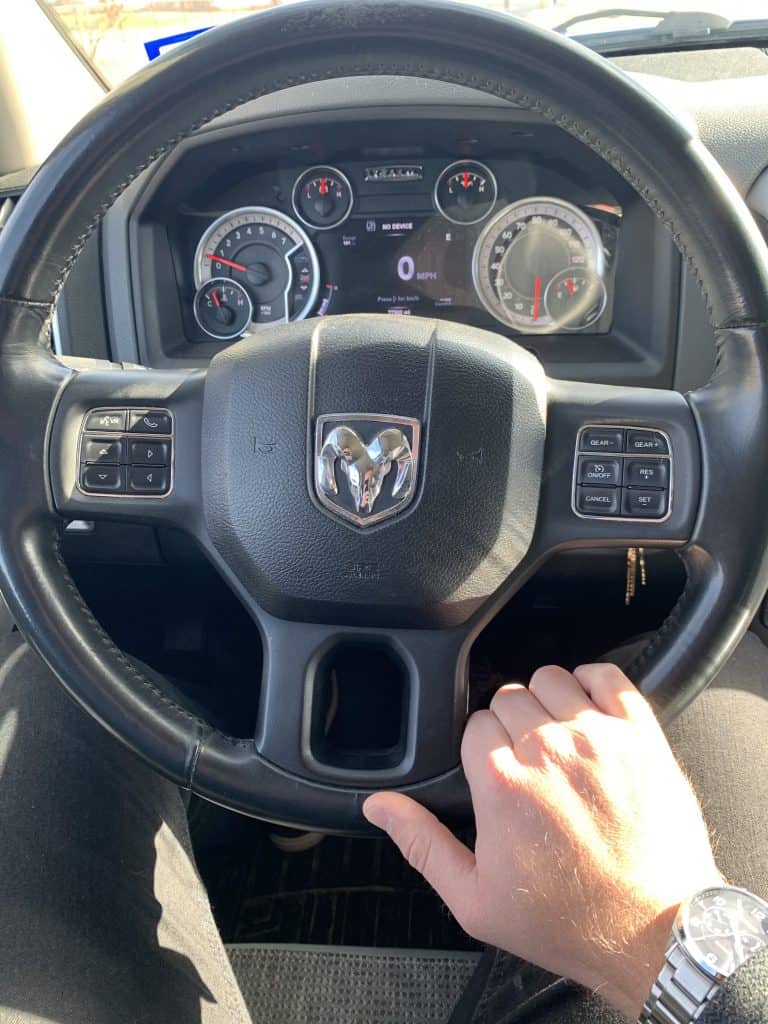
If you want to turn the trailer to the right, move your hand to the right (which turns the wheel to the left), and the trailer will turn to the right.
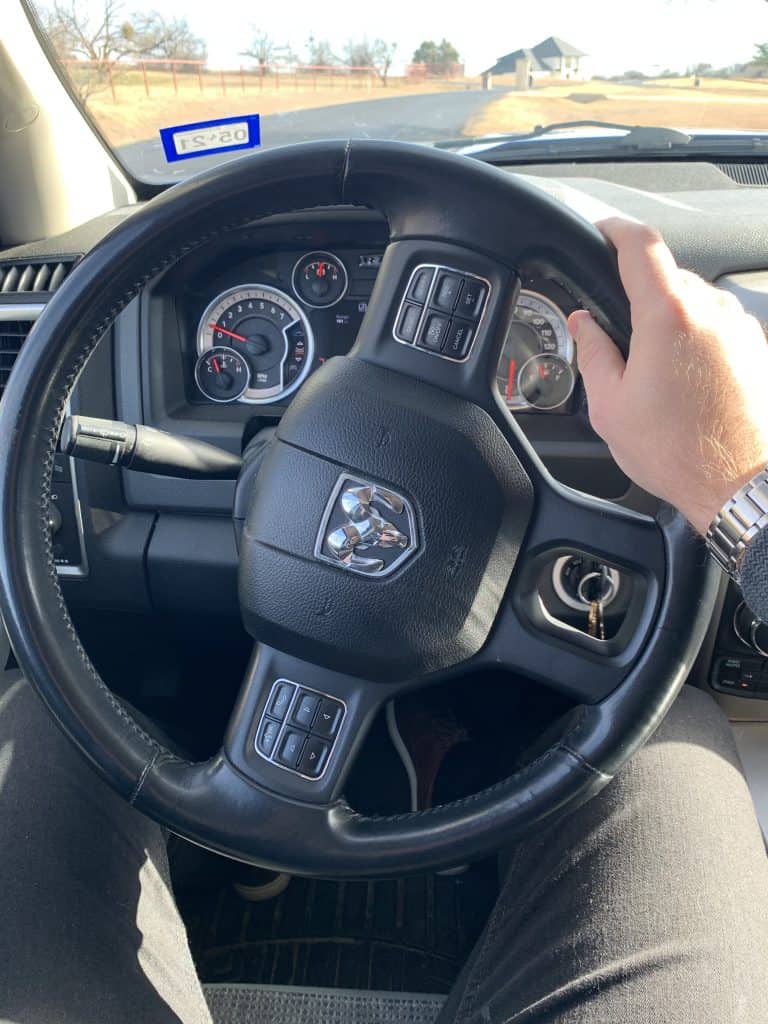
To turn the trailer to the left, start by holding the steering wheel from the bottom, like so:
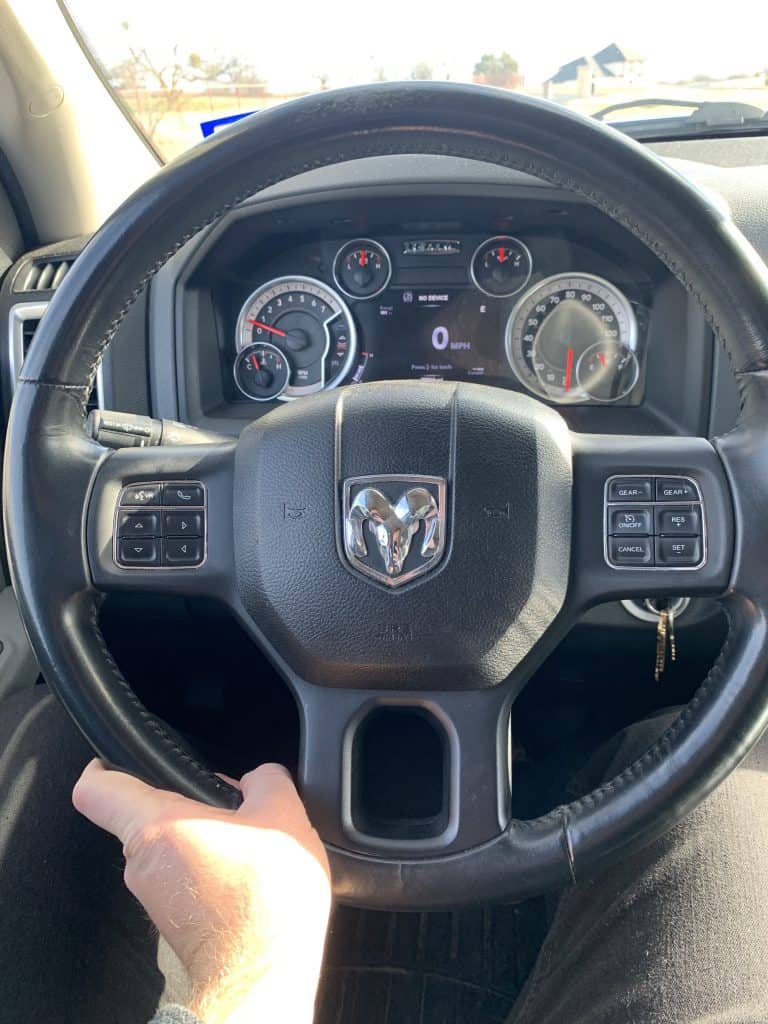
If you want to turn the trailer to the left, move your hand to the left (which turns the wheel to the right), and the trailer will turn to the left.

Trailer Backing Video Guide
To help you master the art of backing a trailer into a tight space, we created a video guide illustrating the maneuver. In this video guide, we'll demonstrate the process of backing a trailer into a tight space:
Do Trailers Need Reverse Lights?
Legally, trailers are not required to have reverse lights. Thus, not many come equipped with reverse lights from the factory.
But from a safety standpoint, this can be problematic. As mentioned, it is difficult (if not impossible) to clearly ascertain what's behind you when backing a trailer without the help of a spotter. Since trailers generally aren't equipped with reverse lights, a good alternative is to, once again, use a spotter. A spotter can both facilitate rearward obstacle avoidance as well as serve as an improvised reverse warning to other motorists or pedestrians in the area.
In Closing
We hope this guide has given you the confidence to back any trailer into a tight space. If you implement the tips we discussed, you'll be able to back a trailer into a space of virtually any size. Before you go, be sure to check out these other guides that might be of interest:
11 Tips For Backing Up A Travel Trailer Or 5th Wheel
15 Travel Trailer Towing Tips Every Driver Should Know
How Not to Hit Tailgate When Backing Up Trailer to Tigth Turn
Source: https://vehq.com/how-to-back-a-trailer-into-a-tight-space-inc-video/
0 Response to "How Not to Hit Tailgate When Backing Up Trailer to Tigth Turn"
Post a Comment